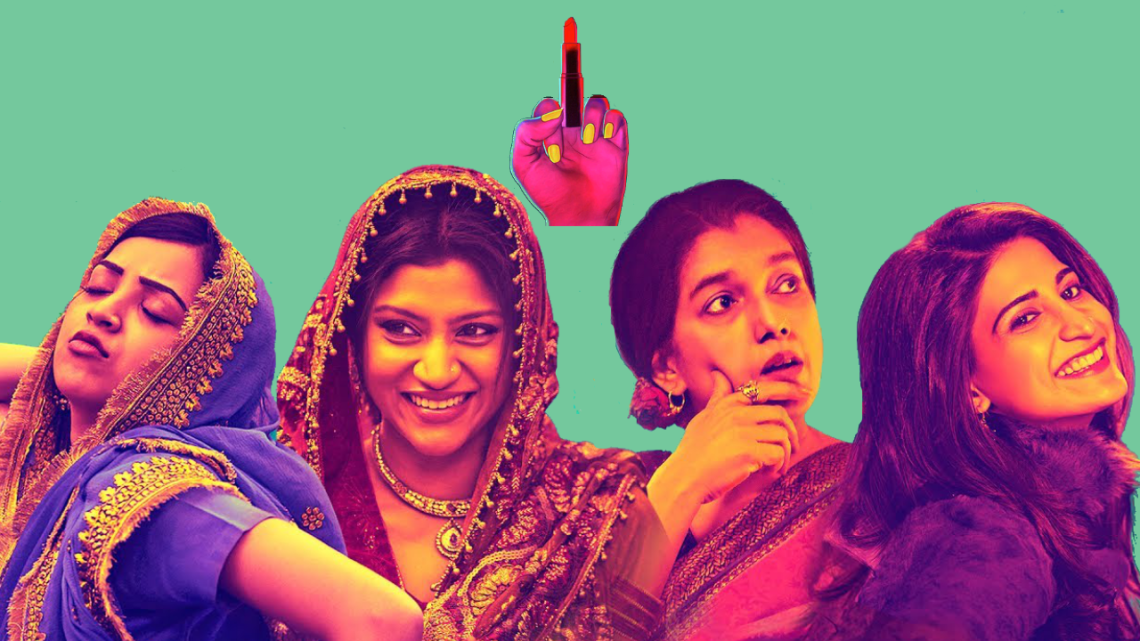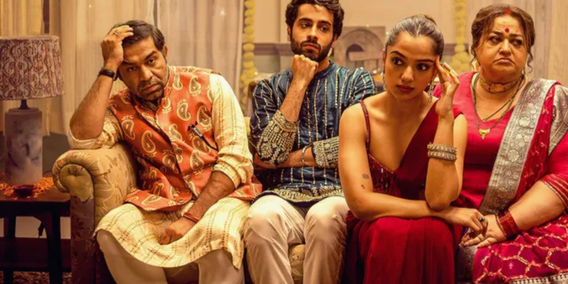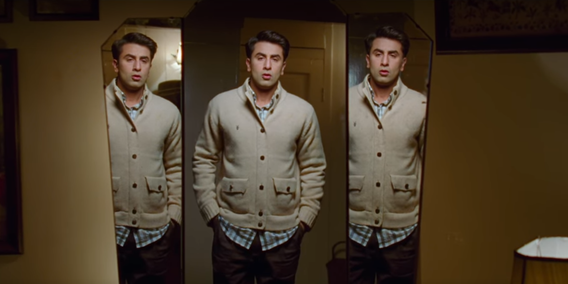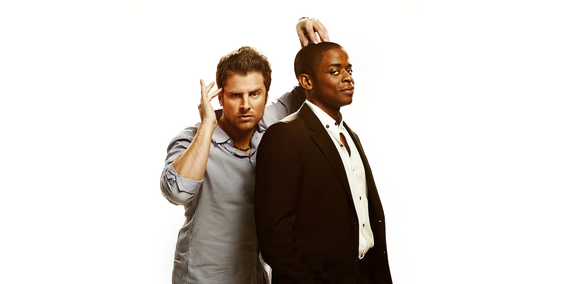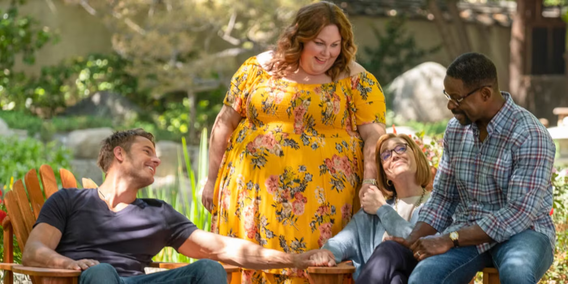The plot line of Lipstick Under My Burkha (directed by Alankrita Shrivastava) revolves around 4 women, each from a different age group and each leading very different lives. A mother of 3 children, left alone to fend for herself; a widowed woman who attends Satsangs; a 20 something year old ambitious woman finding her place in society; and a college girl trying to find her own identity in an oppressed environment.
Each one of these characters are first introduced as very “desi” women, from different backgrounds living in a small town, full of dreams. However, through the course of the movie, we discover the real, sexual, and bold side of each of these 4 women. All of these women have a veil, under which hides their actual thoughts, wants and needs. The title, “Lipstick under my burkha” can, therefore, be seen as the needs and wants of women under the veil of society, where they only lift this veil when no one is looking, somewhere they would not be judged.
All four women, each from different age groups but each going through their own set of problems, have their set of insecurities that they face in and against the society, and with themselves. While one is insecure about her age and lusts younger muscular men, another feels inferior and is reduced to a mere object without any say in her own home and relationships. One of them is morally confused and will go to any extent to conform and be accepted and to find herself. Another is stuck between choosing an ambitious, business oriented life and becoming a wife of a relatively successful man, for better commodities and lifestyle.
All of these insecurities are veiled – their secrets endeavors – parties where they smoke, drink, dance, or swimming classes and chats on the phone with an attractive man, saleswoman avatar and big business plan. All four women try their best to run away from their patriarchic views and ideas, and in conclusion end up veiling these feelings, ideas, thoughts and behaviours. Each woman hiding her own ‘lipstick’ or pleasures to safeguard themselves from society.

"Sccepting the prohibition of sexual subjectivity for women, the society acknowledges a place of women as mothers and wives and a sense of meaning as guarantors of cultural harmony against a landscape where otherwise women’s worth is debatable or clearly absent."A. Narayan in Inaccessible Masturbation, Impossible Mourning
A paper by P. P. Amrutha et al. called “Male Representation in Female Oriented Movies a Study Focused on Parched and Lipstick under My Burkha”, stated that men are negatively portrayed in female oriented movies. It says that men are always seen as the antagonist in these movies and this gives the society a “negative image”. (P.P. Amrutha, 2018) However, in my opinion, it is the society and patriarchy that is shown in it’s true light in this movie. Our society holds certain ideologies that give men and women certain gender roles, and any individual going against these “roles” is scrutinised and put own by society. This applies to everyone. Women, however, seem to have a lot more restrictions put on them which makes them incapable of free speech and action.
In this movie, just like in real life – women also play a major role in patriarchy and sexism. Most women laugh at others or will shut them up when it comes to matters of sexuality or something more “private”. Mothers force their children into marriages, female doctors laugh at a woman who has to get multiple abortions, and aunties judge the women on every action she takes. We don’t realise this, but women also are enablers of patriarchy – we teach younger girls to cover themselves, we talk about our periods in hushed voices, we give them dolls and pink skirts. All of this enables gender roles and patriarchy!
Meet The Author:
 Sarika believes she has learnt the most about life from talking to people around her - having meaningful conversations, understanding different experiences & perspectives. She also loves sunsets, coffee and cats as much as she loves great conversation. Her research interests are ever-changing and ever-growing: she’s curious about a lot of things but mental health awareness always remains priority. Apart from talking and making an extensive list of things to research, Sarika loves spending her day reading books, baking, learning new skills, and making videos.
Sarika believes she has learnt the most about life from talking to people around her - having meaningful conversations, understanding different experiences & perspectives. She also loves sunsets, coffee and cats as much as she loves great conversation. Her research interests are ever-changing and ever-growing: she’s curious about a lot of things but mental health awareness always remains priority. Apart from talking and making an extensive list of things to research, Sarika loves spending her day reading books, baking, learning new skills, and making videos.

